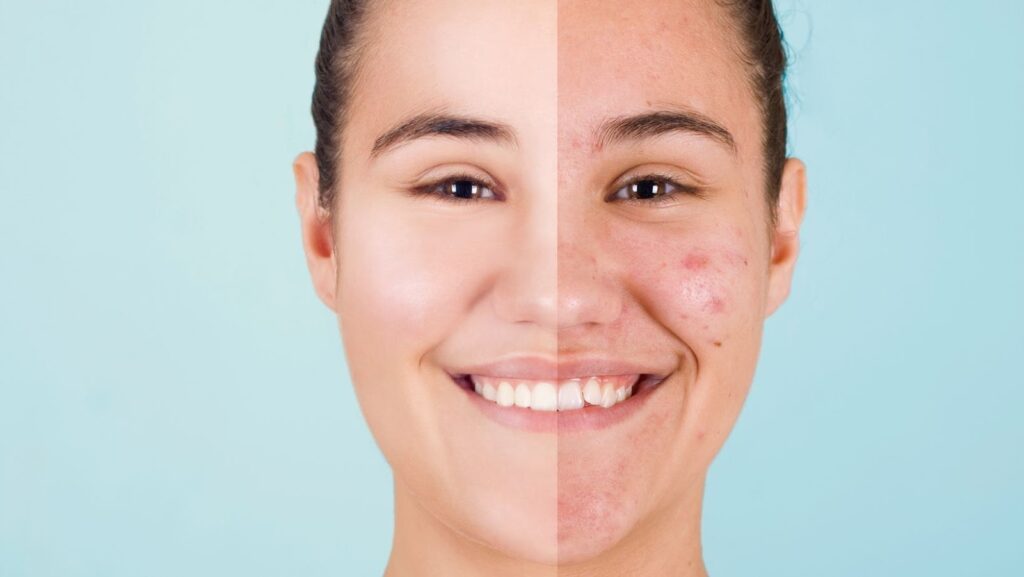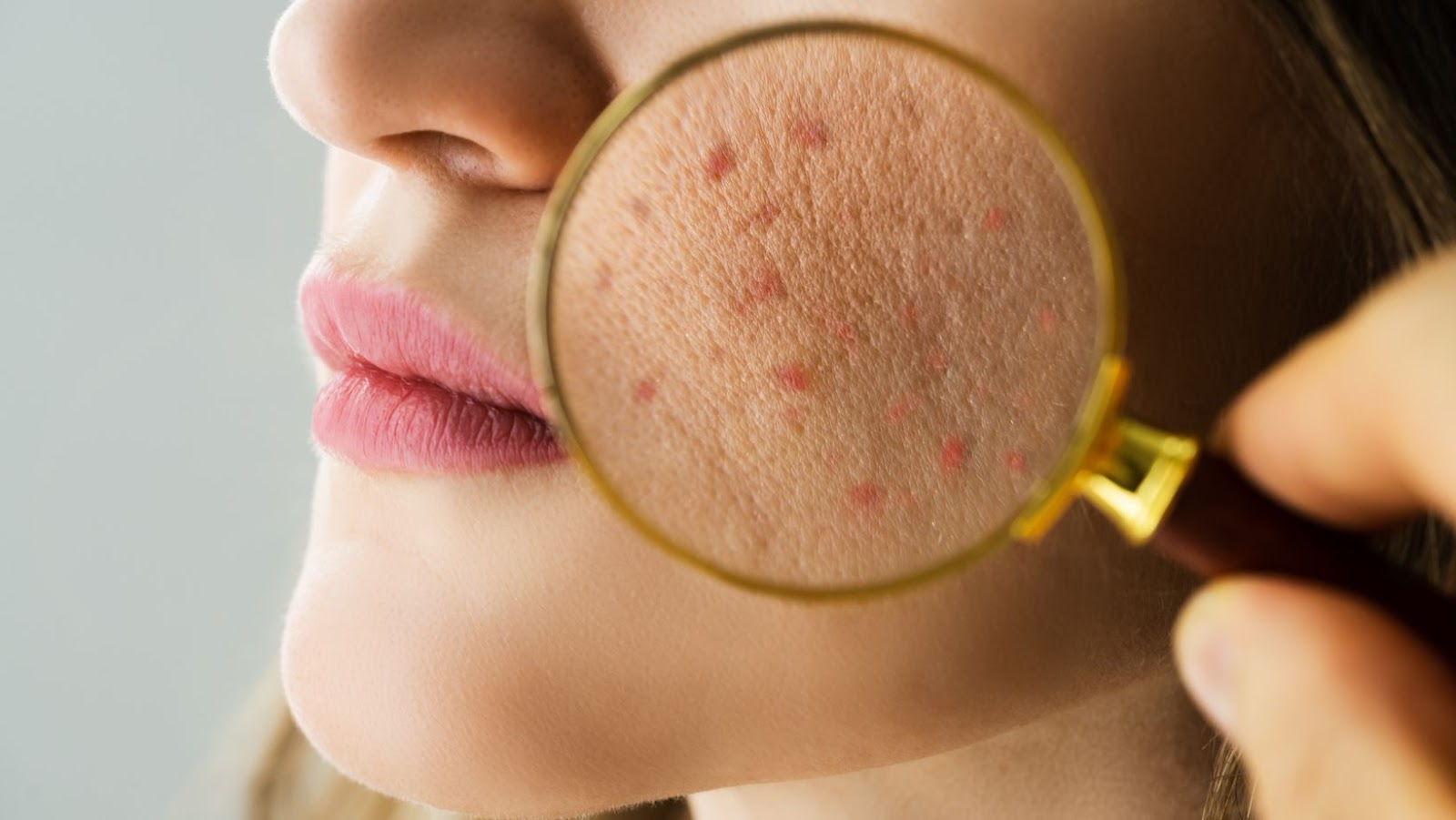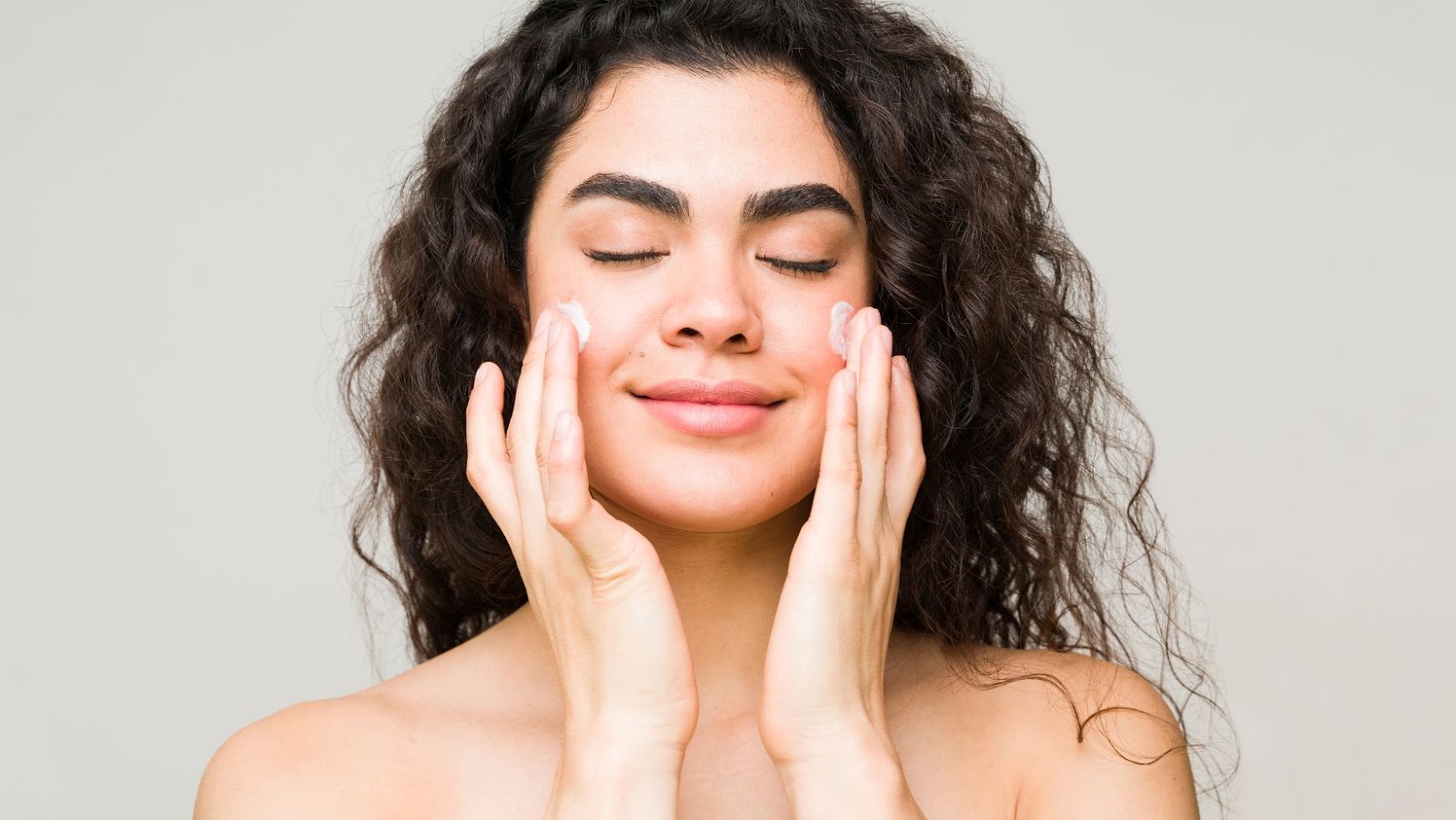
What Are The Precautions You Should Take When Using Tretinoin?
Tretinoin is a topical retinoid medication used for treating acne and other skin conditions. It is important to be aware of the possible side effects of this medication, and to take the proper precautions when using it.
This section will cover all the precautions that should be taken when using tretinoin, as well as instructions on when and how to apply it to your skin.
Do You Put Tretinoin on Before or After Moisturizer
Tretinoin is a powerful medication used to treat acne and diminish the appearance of fine lines and wrinkles. However, it can also cause dryness, irritation, and sensitivity to the sun. To minimize these side effects, it is essential to use tretinoin correctly and take the following precautions:
| Precaution | Description |
| Cleanse your skin thoroughly | To prevent dirt and oil from clogging your pores and interfering with the medication’s absorption. |
| Tone your skin | To balance its pH and prepare it for the medication. |
| Apply a pea-sized amount of tretinoin | Sparingly to your face and other affected areas, avoiding the eyes, mouth, and nostrils. |
| Use a moisturizer | To help prevent dryness and flakiness, which are common side effects of tretinoin. |
| Apply sunscreen with an SPF of at least 30 daily | And limit sun exposure to prevent photosensitivity. |
| Avoid using other skincare products | That contain harsh chemicals or exfoliants that can increase skin irritation. |
By following these precautions, you can effectively use tretinoin while minimizing its side effects. Pro tip: Start with a lower concentration of tretinoin, and gradually increase the dosage to reduce the risk of irritation.
Apply Tretinoin to Dry Skin
Tretinoin is a powerful medication used to treat acne and reduce the appearance of skin aging. To prevent irritation and adverse reactions, it is essential to apply tretinoin to dry skin and to take other precautions while using it.
Here are the precautions you should take when using tretinoin:
| Precaution | Action |
| Avoid sun exposure | Always use sunscreen with an SPF of 30 or higher. |
| Apply tretinoin at night only | After cleansing your skin thoroughly with a mild, non-abrasive cleanser. |
| Pat your skin dry | Wait at least 20 to 30 minutes before applying tretinoin to ensure your skin is completely dry. |
| Use a pea-sized amount | Gently spread it over your face or affected areas. |
| Do not use tretinoin | On dry, cracked, or sunburned skin or on areas with eczema or psoriasis. |
| Severe irritation, redness, or peeling | Discontinue use and consult a dermatologist. |
Pro Tip: Start with a lower concentration and gradually increase to minimize side effects.
Apply a Pea-Sized Amount of Tretinoin to the Face
Tretinoin, a topical medication that helps treat acne and reduce wrinkles, should be used with caution to avoid irritation and other side effects. Here are some precautions to take when using Tretinoin:
| Apply a pea-sized amount of Tretinoin to the face to avoid over-application, excessive dryness, or redness. |
| Avoid exposure to the sun or use a broad-spectrum sunscreen before going out. Tretinoin makes your skin more sensitive and can cause sunburn. |
| Do not use any other topical acne medication or product with alcohol or astringents while using Tretinoin. |
| Do not use if pregnant or breastfeeding, as it can cause harm to the baby. |
| If you experience any moderate-to-severe irritation, stop using Tretinoin and consult a dermatologist. |
Using Tretinoin With Moisturizer
Tretinoin is an effective retinoid for treating mild to moderate acne and signs of aging, but it can also cause skin irritation and sun sensitivity. It’s important to use it as safely and effectively as possible. This article will discuss the recommended use of tretinoin with moisturizer, including questions such as do you put tretinoin on before or after moisturizer?
Wait 20-30 Minutes After Applying Tretinoin to Apply Moisturizer
Tretinoin is a powerful ingredient used to treat acne, fine lines, and other skin conditions. When using tretinoin, it is essential to take certain precautions to avoid irritation.
Here are the precautions you should take when using tretinoin with a moisturizer:
| Precaution | Details |
| Wait 20-30 minutes after applying tretinoin before applying moisturizer | This allows the tretinoin to fully absorb into the skin and reduce the risk of irritation. |
| Use a gentle, non-comedogenic moisturizer | To avoid clogging pores and worsening acne. |
| Avoid using abrasive or exfoliating skincare products | This can increase skin sensitivity. |
| Apply sunscreen daily | Tretinoin can make your skin more sensitive to the sun. |
| Follow your dermatologist’s instructions | Never use tretinoin more often than recommended. |
These precautions will help you get the most out of your tretinoin treatment while avoiding any adverse effects.
Pro tip: If you’re experiencing excessive dryness or irritation, talk to your dermatologist about modifying your skincare routine.
Use a Gentle, Non-Comedogenic Moisturizer
When using tretinoin, it is essential to use a gentle, non-comedogenic moisturizer to prevent skin dryness, irritation, and peeling while still benefiting from the effects of tretinoin.
Here are some precautions to take when using tretinoin with a moisturizer:
| Use tretinoin only at night and wait at least 20-30 minutes before applying a moisturizer to avoid diluting the tretinoin’s effect. |
| Choose a gentle, fragrance-free, and non-comedogenic moisturizer to prevent clogged pores, acne breakouts, or the formation of blackheads. |
| Avoid using moisturizers that contain alpha-hydroxy acids (AHAs), salicylic acid, or benzoyl peroxide, as they can cause excessive skin irritation when combined with tretinoin. |
| Apply a pea-sized amount of tretinoin to your face’s affected areas, avoiding the eyes, nose, and lips area. |
| Apply a small amount of moisturizer after the tretinoin cream has dried to keep your skin hydrated and supple. |
| Remember to apply sunscreen during the day, as tretinoin can make your skin more sensitive to the sun’s harmful UV rays. |
Pro tip: Always consult a dermatologist before using tretinoin to determine if it’s suitable for your skin type and condition.

Avoid Using Too Much Moisturizer
Tretinoin is a powerful medication used to treat acne, fine lines, and wrinkles. When used with moisturizer, it is important to avoid using too much moisturizer to avoid diluting the effects of tretinoin.
Here are some precautions to take when using tretinoin with moisturizer:
| Use a pea-sized amount of tretinoin medication for each application to avoid overuse. |
| Wait for the medication to fully absorb into the skin before applying moisturizer. |
| Use an oil-free or non-comedogenic moisturizer that does not clog pores. |
| Avoid using products that contain alpha-hydroxy acids, benzoyl peroxide, or salicylic acid with tretinoin. |
| Use sunscreen during the day as tretinoin medication increases skin sensitivity to the sun. |
Following these precautions will help you achieve the best results from tretinoin and moisturizer without any skin irritation or side effects.
Dealing With Tretinoin Side Effects
Tretinoin is a popular topical treatment used to treat acne and reduce the signs of aging. However, it is important to be aware of the potential side effects of using tretinoin, such as skin irritation and dryness.
There are a few precautions you should take in order to minimize these effects, as well as tips on how to apply tretinoin, such as which products to use before and after applying it.
Common Side Effects of Tretinoin and How to Manage Them
Tretinoin is a commonly-prescribed medication for treating acne and reducing the appearance of fine lines and wrinkles. While its benefits are clear, it can also come with a variety of side effects that are important to manage.
Here are some common side effects of tretinoin and how to manage them:
| 1. Dry, peeling, or flaking skin: | Use a moisturizer to alleviate dryness and flaking. Consider using a gentler formulation of tretinoin or using it less frequently. |
| 2. Redness and irritation: | Apply a cold compress or mild corticosteroid cream to calm the skin. Avoid using other skin treatments, such as scrubs or toners, until the irritation subsides. |
| 3. Sensitivity to sunlight: | Wear sunscreen and protective clothing to avoid sunburn and further skin damage. |
| 4. Initial acne flare-ups: | This is a common side effect that occurs as tretinoin causes deep-rooted acne to rise to the surface. It will typically subside after a few weeks of use. |
By taking precautions and managing these side effects, you can enjoy the benefits of tretinoin without becoming too uncomfortable during the process.
Signs of an Allergic Reaction to Tretinoin
Tretinoin is a popular topical medication used to treat acne and reduce the signs of aging. However, in rare cases, tretinoin can cause an allergic reaction that requires immediate medical attention. Some signs of an allergic reaction to tretinoin include:
| Redness, itching, or swelling of the skin |
| Hives or rash |
| Difficulty breathing or swallowing |
| Tightness in the chest |
| Swelling of the face, lips, tongue, or throat |
If you experience any of these symptoms after using tretinoin, stop using the medication and seek medical attention immediately. To avoid this allergic reaction, it’s important to take precautions when using tretinoin. Avoid applying tretinoin to sensitive areas, such as around the eyes, mouth, or nose, and use only as directed by your healthcare provider. Always do a patch test before applying tretinoin and if you have sensitive skin, consult with your dermatologist before using the medication.
Pro tip: If you’re using tretinoin for the first time, apply a small amount to your skin every other day to build up your skin’s tolerance gradually.
What to do if You Experience Severe Side Effects
Tretinoin is a powerful medication that is commonly used to treat acne, but it can have some severe side effects. If you experience severe side effects while using tretinoin, here’s what you should do:
| Stop using the medication immediately and contact your doctor or dermatologist. |
| Let them know what side effects you are experiencing and how severe they are. |
| Follow their instructions on how to proceed, which may include reducing the frequency or dosage of the medication or switching to a different treatment. |
In order to avoid side effects, take the following precautions when using tretinoin:
| Use it as directed by your doctor or dermatologist. |
| Avoid sun exposure and use a broad-spectrum sunscreen with an SPF of at least 30 when you are outside. |
| Be gentle with your skin, avoid harsh scrubs or abrasive cleansers, and moisturize regularly. |
| Use tretinoin at night, as sunlight can make the medication less effective. |
By taking these precautions, you can minimize the risk of side effects while still enjoying the benefits of tretinoin for acne treatment.

Combining Tretinoin With Other Skincare Products
Tretinoin is a skincare ingredient known to reduce wrinkles, improve skin texture, and lighten dark spots. When using Tretinoin, you may wonder if you should use it with other skincare products such as moisturizers. There are certain precautions you should take in order to ensure you get the most out of the product.
In this article, we’ll discuss the best ways to combine Tretinoin with other skincare products.
Do Not Use Tretinoin With Other Exfoliating Agents
Tretinoin is a powerful skincare product used to treat acne, fine lines, and wrinkles. When using tretinoin, it’s important to avoid other exfoliating agents that may cause irritation or increase sensitivity.
Here are some precautions to take when using tretinoin with other skincare products:
| Avoid using other retinoids or exfoliants that contain glycolic acid, salicylic acid, or benzoyl peroxide, which may cause excessive dryness, redness, or peeling. |
| Use gentle cleansers and moisturizers that are free of fragrances and irritants to avoid further irritation. |
| Apply tretinoin at night, and wait at least 20 minutes before applying any other skincare products to minimize irritation. |
| Always use a broad-spectrum sunscreen with at least SPF 30 during the day to protect your skin from UV damage. |
| Consult with your dermatologist before combining tretinoin with any other skincare product. Pro tip: Start with a lower concentration of tretinoin and gradually increase as your skin becomes more tolerant. |
Avoid Using Tretinoin With Other Potentially Irritating Products
Tretinoin is a powerful skincare ingredient commonly used to treat acne and reduce signs of aging, but it can also cause skin irritation and sensitivity. To avoid exacerbating these side effects, it’s important to use tretinoin with caution and avoid combining it with other potentially irritating skincare products.
Here are some precautions to take when using tretinoin:
| 1. | Avoid using tretinoin with other retinoids or exfoliants, such as AHAs or BHAs, which can cause excessive skin dryness and irritation. |
| 2. | Don’t apply tretinoin to broken or irritated skin, as this can increase the risk of further skin damage. |
| 3. | Limit your exposure to the sun while using tretinoin, and always apply a broad-spectrum sunscreen with an SPF of at least 30 before going outside. |
| 4. | Moisturize regularly to help counteract the drying effects of tretinoin. |
By following these precautions, you can minimize the risk of skin irritation and other side effects while still enjoying the benefits of tretinoin for your skin.
Seek Advice From a Dermatologist Before Using Tretinoin With Other Prescription Skincare Products
Tretinoin is a powerful skincare ingredient that is commonly used to treat acne and wrinkles, but it can potentially cause skin irritation when used with other skincare products. Seeking advice from a dermatologist before using Tretinoin with other prescription skincare products is essential to avoid any adverse reactions.
Here are the precautions you should take when using Tretinoin:
| Avoid using Tretinoin with products that contain salicylic acid, glycolic acid, or benzoyl peroxide, as this can lead to excessive skin dryness and peeling. |
| Ensure to apply a broad-spectrum sunscreen daily because Tretinoin can make your skin more sensitive to the sun, which increases your risk of sunburn or sun damage. |
| Do not use Tretinoin with any other prescription medication without first consulting a dermatologist. |
| Always follow the recommended application frequency and direction to prevent overdrying and irritation of the skin. |
| It is advisable to start slowly and increase the frequency gradually, allowing your skin to adjust to the product. Pro tip- Do not mix Tretinoin with anything before application or use just before sleeping to reduce skin irritation. |






